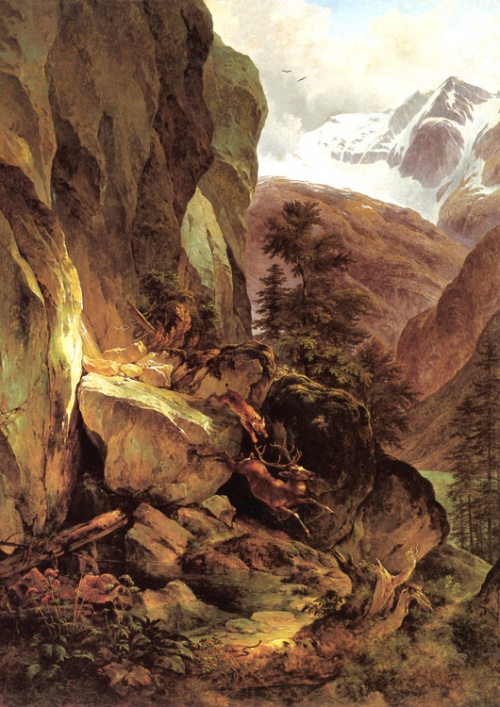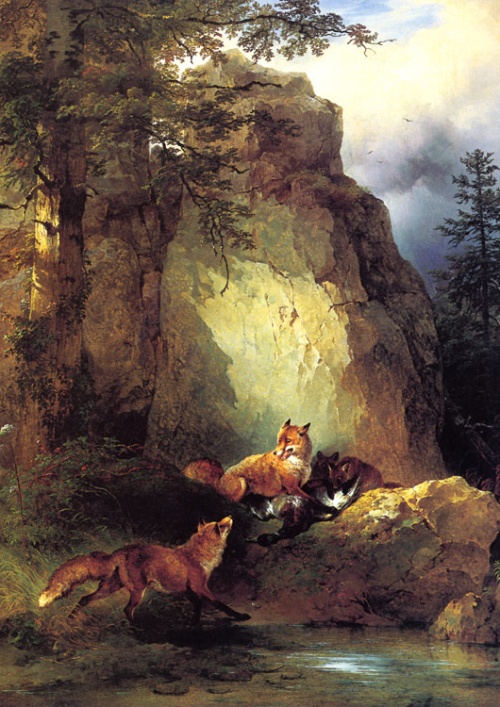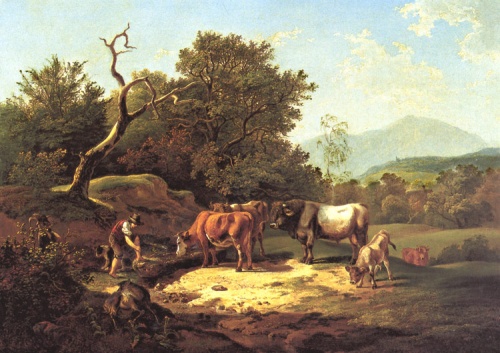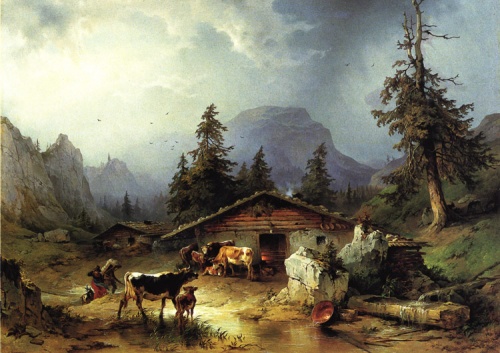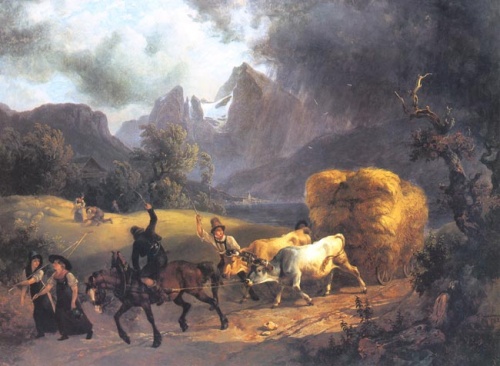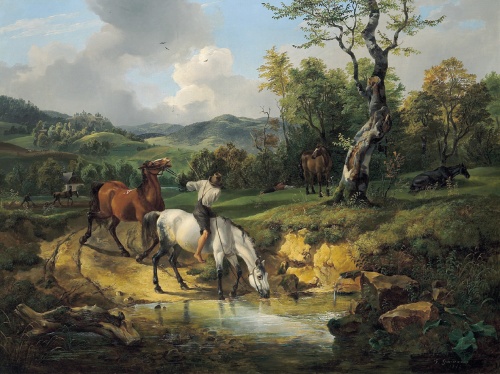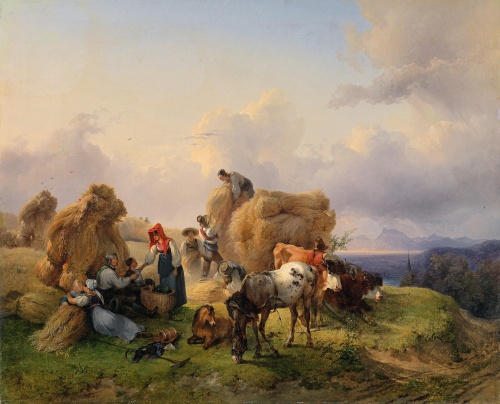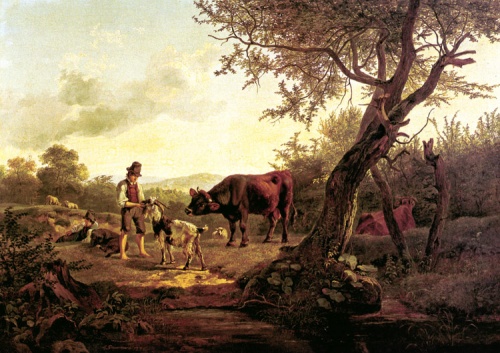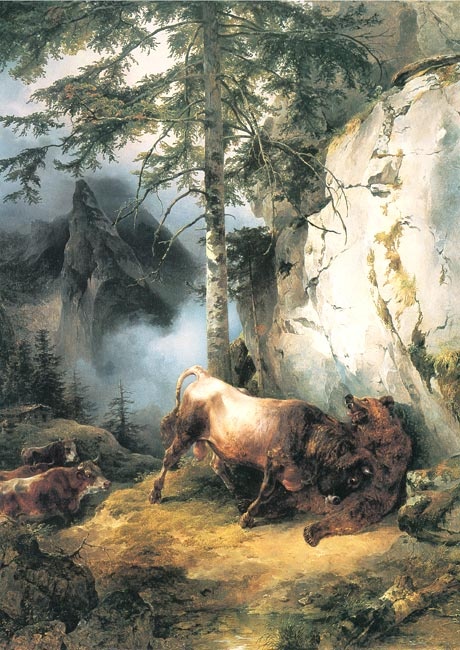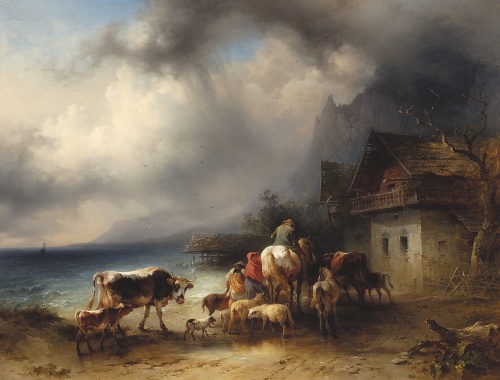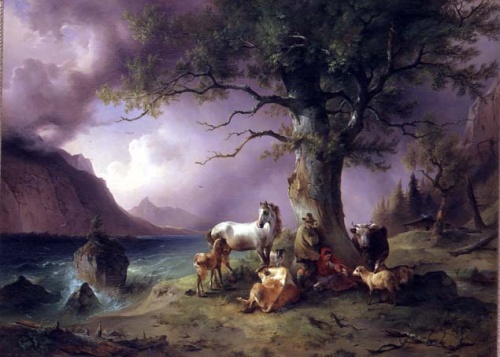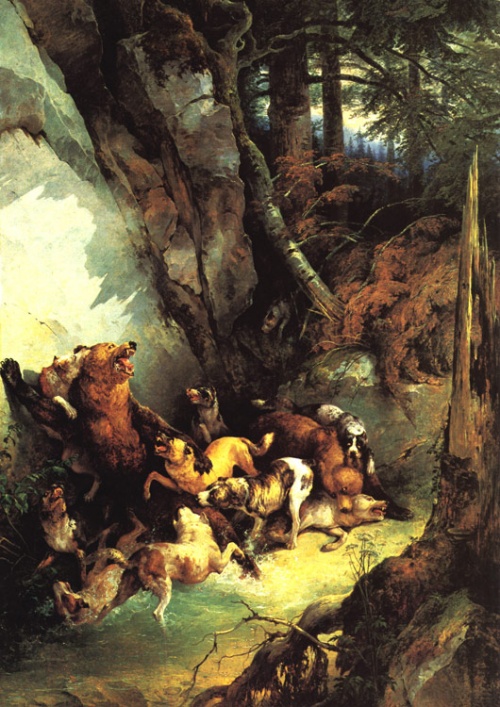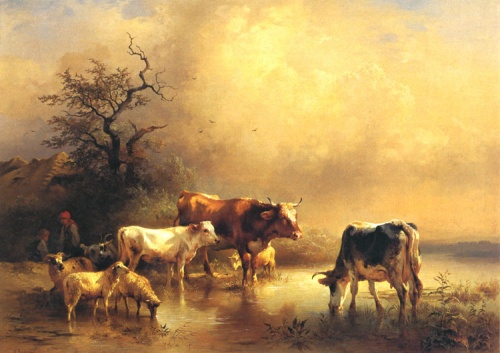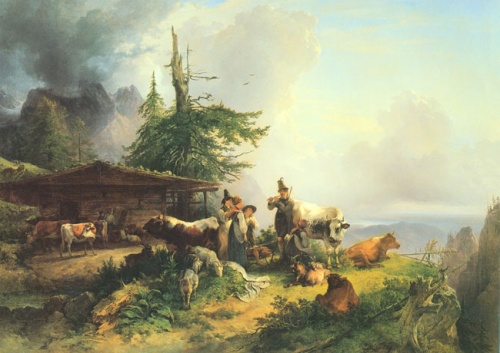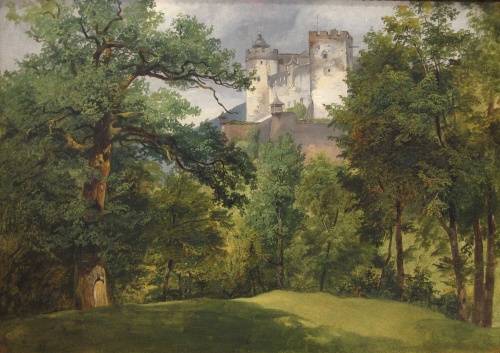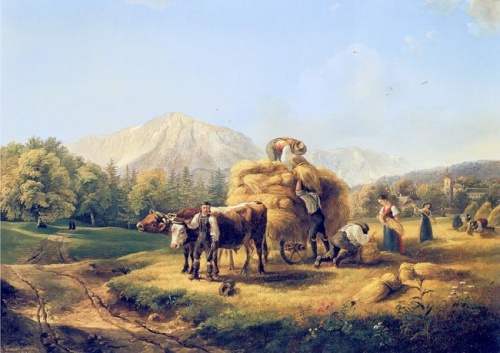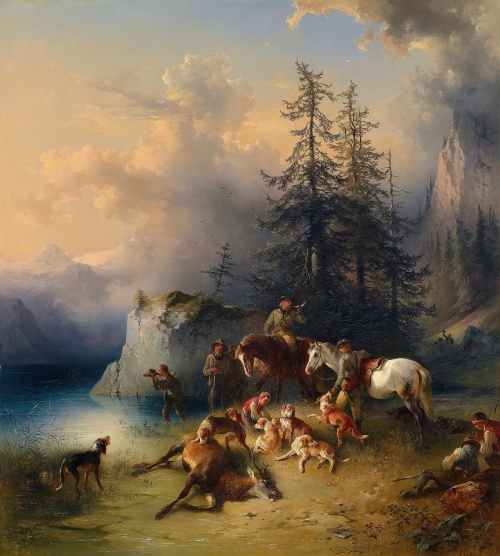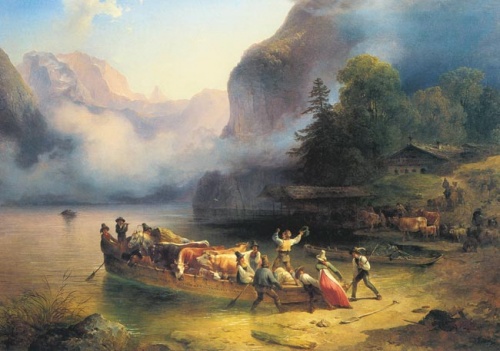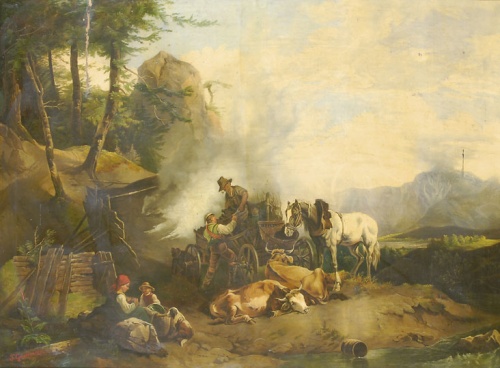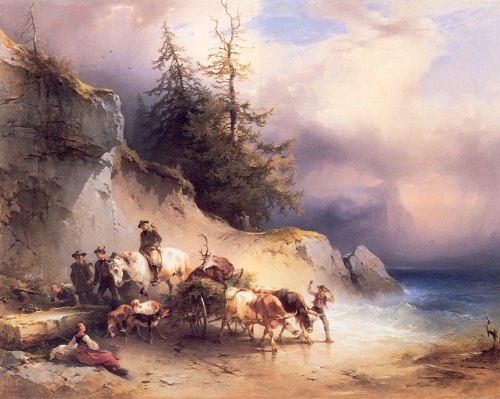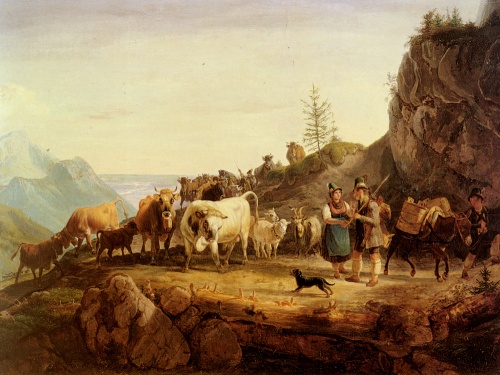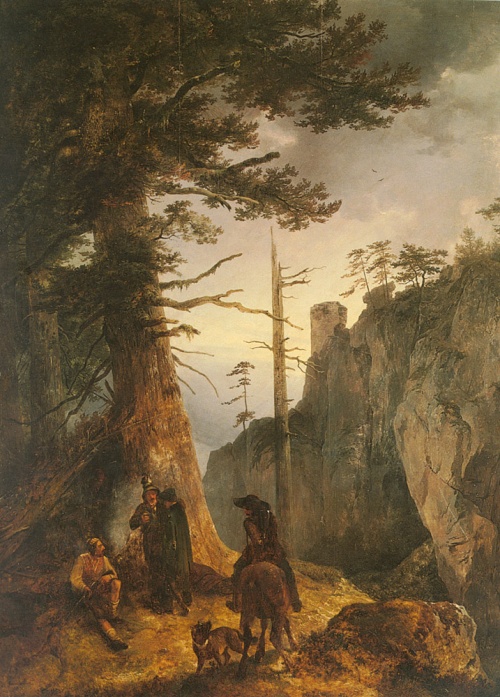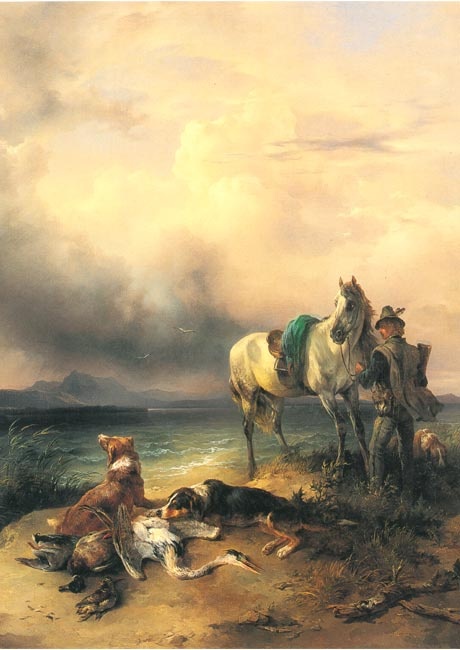Friedrich Gauermann (1807-1862) (41 works)
FRIEDRICH GAUERMANN (1807–1862), Austrian artist, son of the landscape painter Jacob Gauermann (1773–1843), was born in Wiesenbach near Gutenstein in Lower Austria on September 10, 1807. His father wanted him to devote himself to agriculture, but the example of his older brother, who, however, died early, fostered in him a penchant for art. Under the guidance of his father, he began to study landscapes, and also diligently copied the works of the main masters of animal painting, stored in the academic and court library of Vienna. In the summer he made art tours throughout the lands of Styria, Tyrol and Salzburg. The two animal works he exhibited at the Vienna Exhibition of 1824 were considered the outstanding works of his years and led to his receiving commissions in 1825 and 1826 from Prince Metternich and Caraman, the French ambassador. His reputation was greatly enhanced by The Tempest, exhibited in 1829, and from this time his work was in great demand and commanded correspondingly high prices. His Field Worker was considered by many to be the most remarkable painting at the Vienna Exhibition of 1834, and his numerous depictions of animals entitled him to a place in the front rank of painters of this class of subjects. A feature of his paintings is the depiction of human and animal figures in combination with appropriate landscapes and in characteristic situations to show nature as a living whole, and he is especially successful in depicting the free life of animals in wild mountain landscapes. Along with a great mastery of the technical features of his art, his works demonstrate patient and insightful observation, free and correct processing of details, bold and clear coloring. He died in Vienna on July 7, 1862.
Many of his paintings were engraved, and after his death the Austrian Kunstverein (Arts Union) prepared a selection of fifty-three of his works for this purpose.
